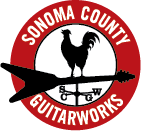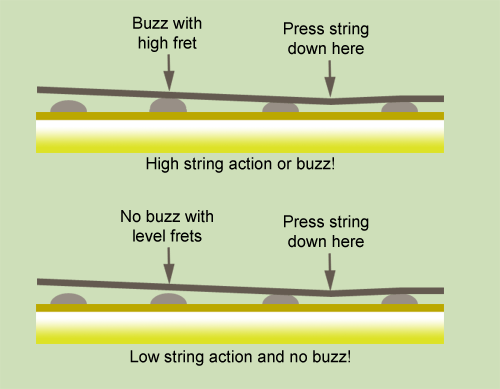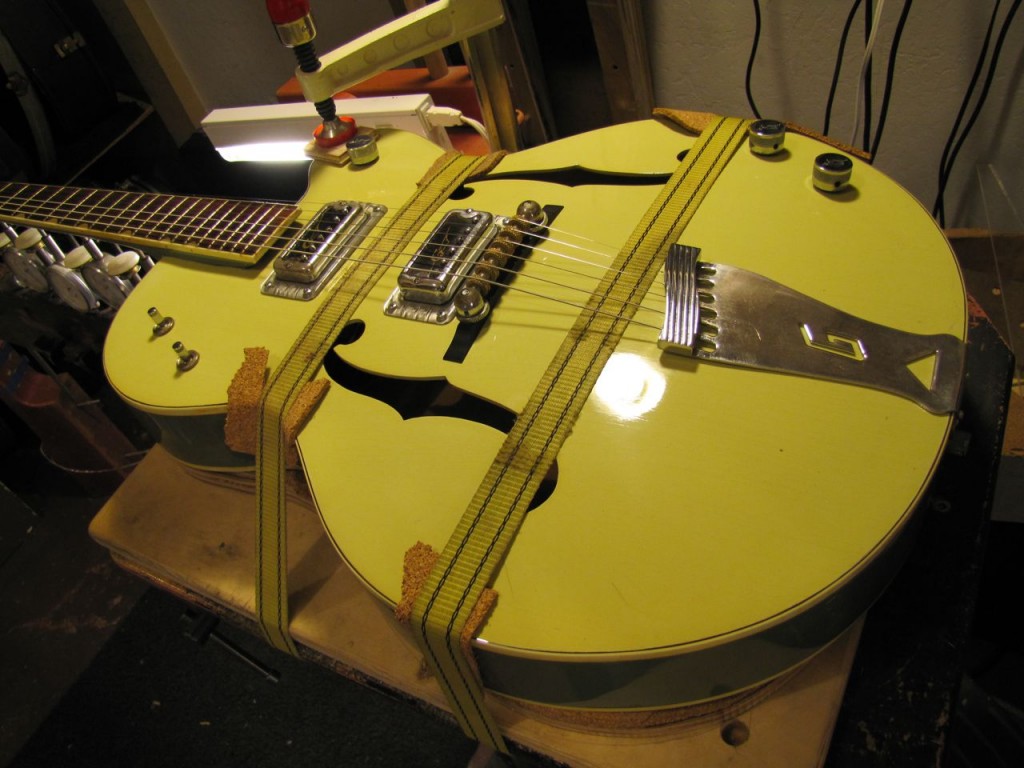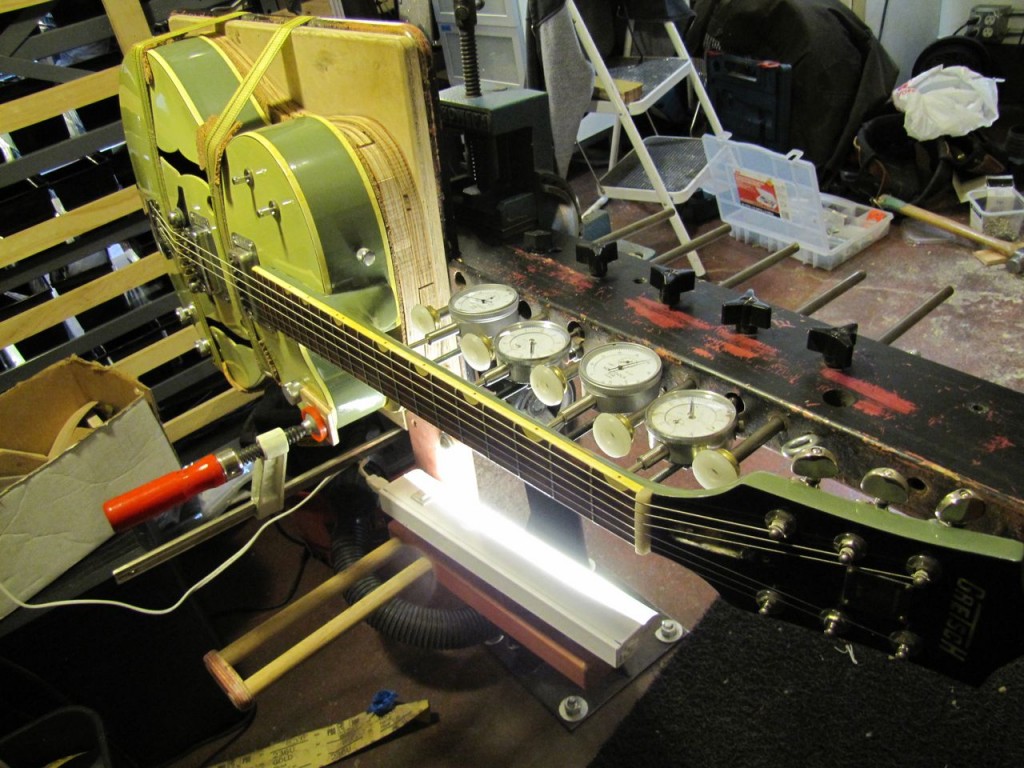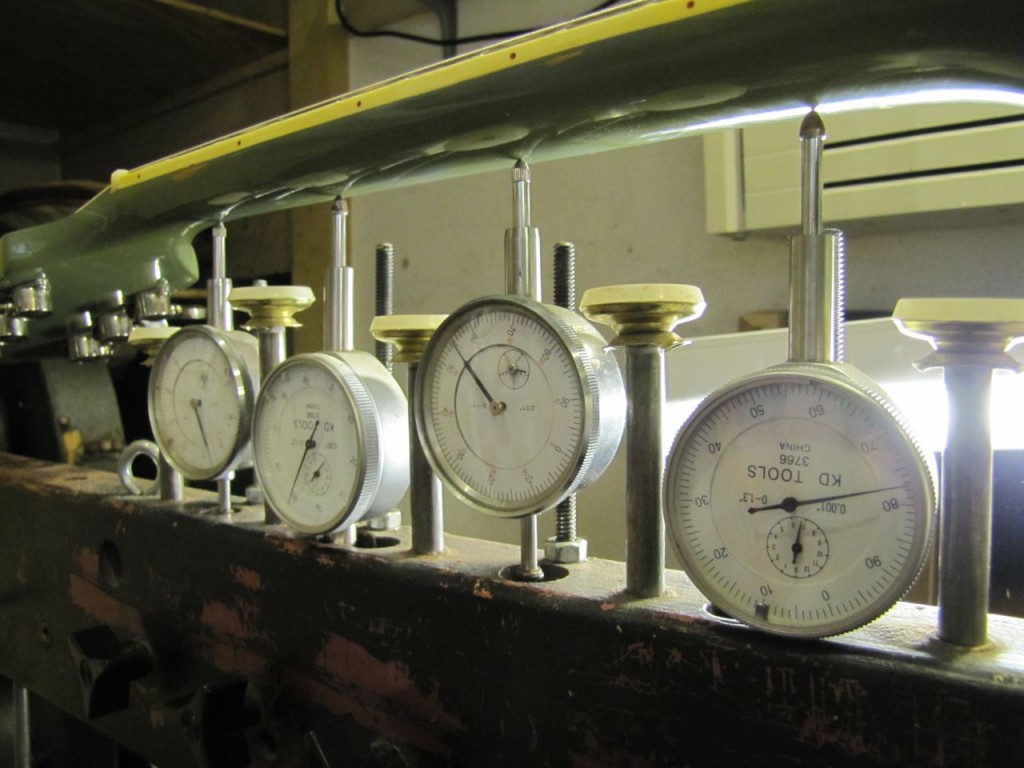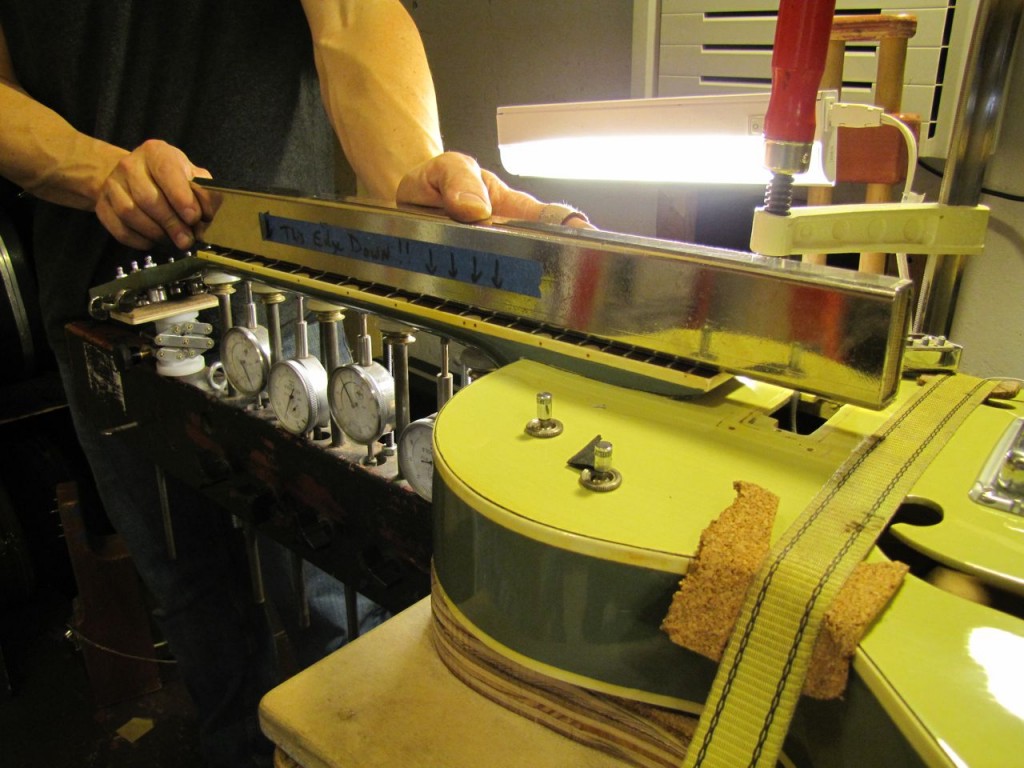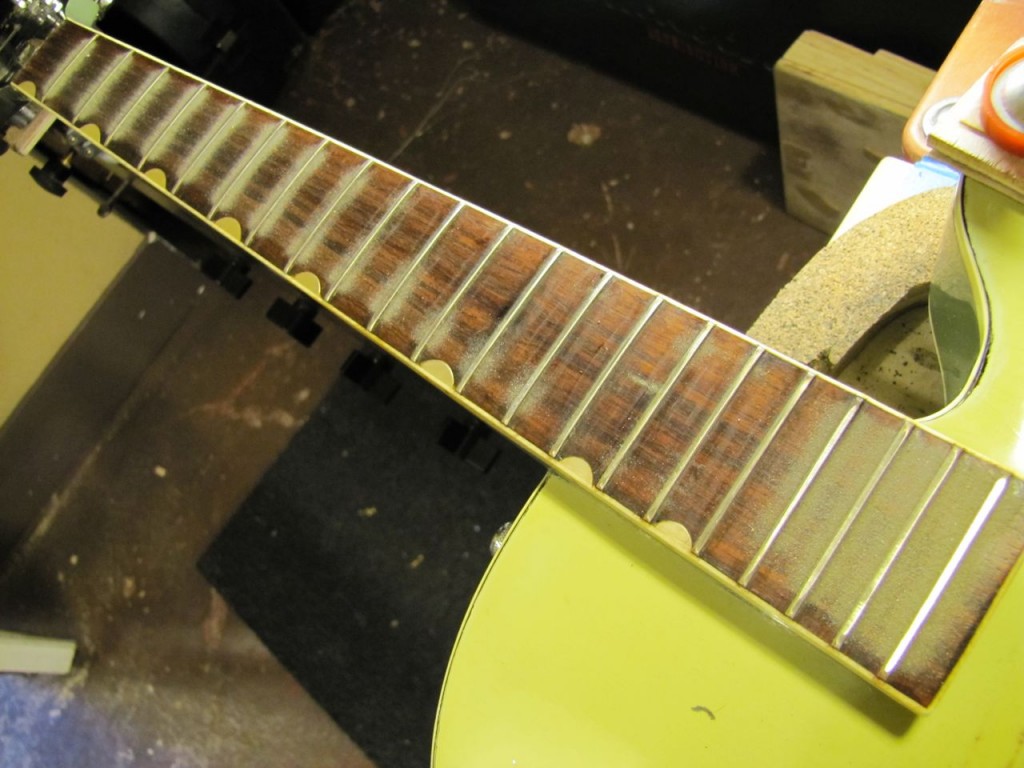Our number one job we do here, day in day out, is fretwork. Precision fretwork is the key to a great playing instrument – if the frets aren’t dead level, the guitar will buzz, fret out, or need high action in order to play. Almost every guitar, no matter how expensive it is, needs some degree of fretwork. Let’s face it, most large manufacturers aren’t crafting individual works of art: they’re pumping units out of a giant factory, so they’re not so much interested in perfection as reaching a quota. (In fact, the ONLY large manufacturers who seem to get them mostly right is PRS and Ernie Ball/Musicman.) Alternately, most smaller builders get so lost in the woodcraft and design of their instrument, that the setup and fretwork are more of an afterthought rather than they key focus they should be. This is where we come in: our shop completely revolves around fretwork.
Why does your guitar need fretwork? It’s simple trigonometry. Think of your guitar as a right triangle: the neck is one side, forming a right angle with the bridge, and the string is another side (the hypotenuse). If the frets are even slightly uneven on the neck, it will be impossible to setup the guitar with low action – the strings will buzz on the high frets. Here’s a helpful little picture that illustrates what we’re talking about:
A difference of even a few thousands of an inch can make a huge impact on how a guitar plays. If your frets aren’t DEAD even, it’s not going to play clean, unless your action is set high. How do we remedy uneven frets? We rely on our custom built neck jig, which we have built and refined over the years. The neck jig simulates string tension on the neck, so we can work on the instrument under real world conditions without the strings getting in the way. Here’s how it works:
A guitar is strapped in to the jig, then rotated into playing position (note that our jig is securely bolted into the floor).
Putting the guitar in playing position is extremely important: a neck can move as much as 20 thousandths of an inch just by orientating it on it’s back vs. playing position. We do all of our work under real world conditions, and we don’t know many musicians who play with their guitars laying on a work bench. If we didn’t set it in playing position, the fret level would be wildly inaccurate. We measure the neck using four dial indicators, which are accurate down to a thousandths of an inch:
With the guitar in playing position, we set the neck as straight as possible, zero out the indicators, rotate the guitar back up to working position, remove the strings, and then jack the neck back up so that the indicators are pointed at zero. Now the neck is back in the same shape as it was while under string tension, and is ready for work.
We use a precision leveling beam, which spans the neck, to level the frets.
Just a couple of passes will quickly reveal where the fret inconsistencies are. Here, the fret dust buildup shows there’s a lot of high frets in a the end of the fingerboard, and a dip in the treble side of the neck at around fret 10-15:
Once the frets have all been hit equally, we crown the frets (restoring the round shape) and polish them until they gleam, then give the guitar a compete setup. With a perfectly leveled board, we can set the action extremely low without buzz. No matter how cheap or expensive your guitar may be, chances are it can be made to play better with some fretwork. Questions? Give us a call at the shop or email us at [email protected]


